Remember when the future arrived in living color during the Reagan era? The 1980s gave us technological marvels that made us feel like we were living in some kind of science fiction movie—devices and innovations that made our jaws drop and our imaginations soar. We genuinely believed we were witnessing the pinnacle of human innovation, only to look back now and chuckle at how charmingly primitive it all seems by today’s standards. From brick-sized mobile phones to cassette Walkmans that skipped when you jogged too vigorously, let’s take a nostalgic trip back to when cutting-edge meant something entirely different.
1. The Brick Cell Phone
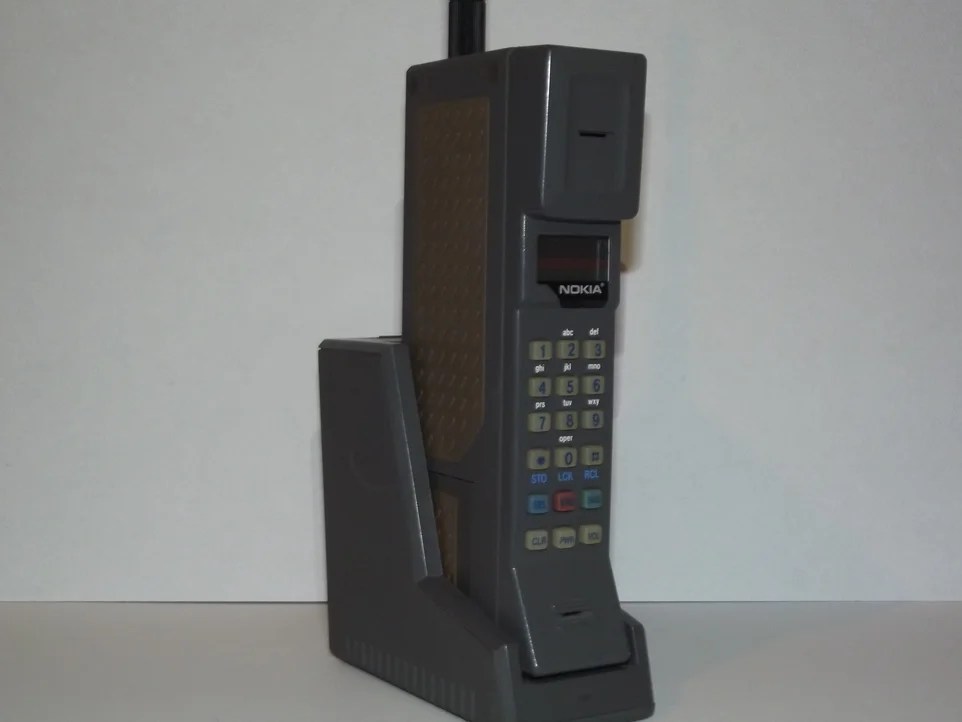
When Gordon Gekko whipped out his Motorola DynaTAC 8000X in the movie “Wall Street,” it wasn’t just a phone—it was a statement that screamed success, power, and being on the bleeding edge of technology. These massive portable phones weighed almost two pounds, cost about $4,000 (that’s over $10,000 in today’s money!), and offered a whopping 30 minutes of talk time before needing a recharge. Everyone who saw one thought, “This is it—we’re finally living in the future where you can make calls from anywhere,” conveniently forgetting that “anywhere” meant wherever you could comfortably carry a device the size and weight of a small brick.
Now we look at these technological dinosaurs and can hardly believe we once thought they represented the height of miniaturization and convenience. Modern smartphones are thousands of times more powerful, infinitely more capable, and fit comfortably in a pocket rather than requiring their own carrying case. The humble brick phone reminds us that yesterday’s marvel is today’s museum piece, though you have to admit—slamming down one of those chunky handsets after an intense conversation probably felt a lot more satisfying than tapping an “end call” button.
2. The Sony Walkman

When the Sony Walkman hit the market in 1979 and exploded in popularity throughout the ’80s, it represented nothing short of a personal music revolution that seemed almost magical. Suddenly you could take your favorite albums anywhere, creating your own private soundtrack while jogging, commuting, or just wandering around the neighborhood. The freedom to listen to your carefully curated mixtapes without disturbing others felt genuinely revolutionary, even if the device ate through batteries faster than a kid through Halloween candy and weighed down your belt loop like a small anvil.
These portable cassette players were the status symbol of the era, with their distinctive orange foam headphones signaling to everyone that you were both musically inclined and technologically savvy. The ritual of flipping the cassette to side B halfway through your listening session, the careful rewinding with a pencil to save battery life, and the static-filled joy when the tape started to wear out are memories that define a generation. Today’s kids, with their unlimited streaming libraries and weightless wireless earbuds, will never understand the commitment it took to bring just twelve songs with you on your morning commute.
3. VHS Video Recorders
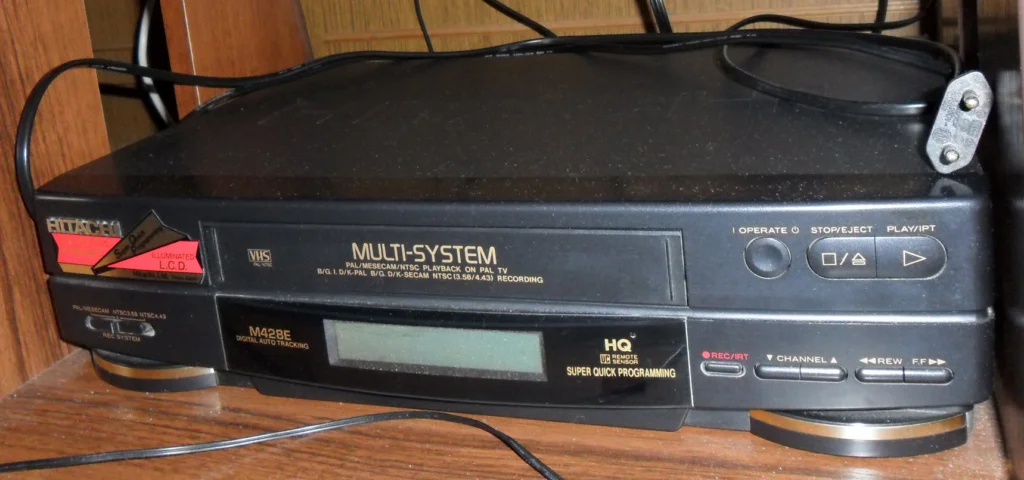
The ability to time-shift television by recording shows for later viewing felt like we had collectively broken the laws of physics and gained control over time itself. VCRs transformed living rooms across America into personal media centers where you could watch “Dallas” or “Miami Vice” on your schedule, not the network’s, provided you could figure out how to program the infamously complicated timer. The family arguments over recording priorities, the strategic placement of blank tapes next to the TV, and the ritual of “Be Kind, Rewind” became part of the cultural fabric as substantial as the shows we were recording.
The behemoth machines with their flashing “12:00” time displays (because no one could figure out how to set the darn clock) represented cutting-edge home entertainment that justified their astronomical price tags. Who can forget the satisfying mechanical chunk as the tape loaded, or the heart-stopping moment when a beloved tape got caught in the machine’s hungry mechanisms? Today we complain when a streaming service takes an extra second to buffer, completely forgetting the patience required to wait through several minutes of trailers and FBI warnings before getting to the feature presentation.
4. The Atari 2600
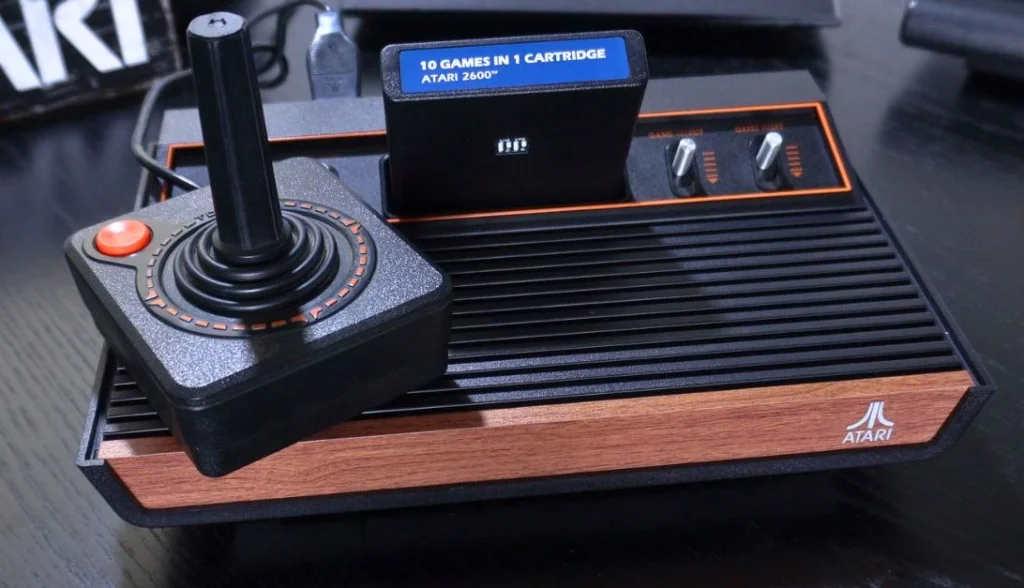
When the Atari 2600 found its way into millions of American homes, it transformed living rooms into arcades and created a new form of family entertainment that felt beamed in from tomorrow. Those blocky, pixelated graphics and simple joystick controls may look primitive now, but at the time, being able to control what happened on your television screen felt like nothing short of technological wizardry. Games like Space Invaders, Pac-Man, and Pitfall had families huddled around their cathode ray tubes for hours, marveling at how interactive entertainment had forever changed how we spent our evenings. PCMag puts into perspective just how much gaming has changed, starting with and because of the Atari 2600.
The cartridge system, with its ritualistic blowing to remove dust when games wouldn’t load, created a physical connection to our digital entertainment that today’s downloadable content can’t replicate. That distinctive wood-paneled console sitting proudly under the family TV signaled that yours was a household that embraced the future, even if that future came with just 128 bytes of RAM and graphics that barely resembled their real-world counterparts. Modern gamers with their photorealistic environments and complex storylines might laugh at Atari’s simplicity, but they’ll never know the pure joy of mastering a game that consisted of nothing more than a few moving squares.
5. The Microwave Oven
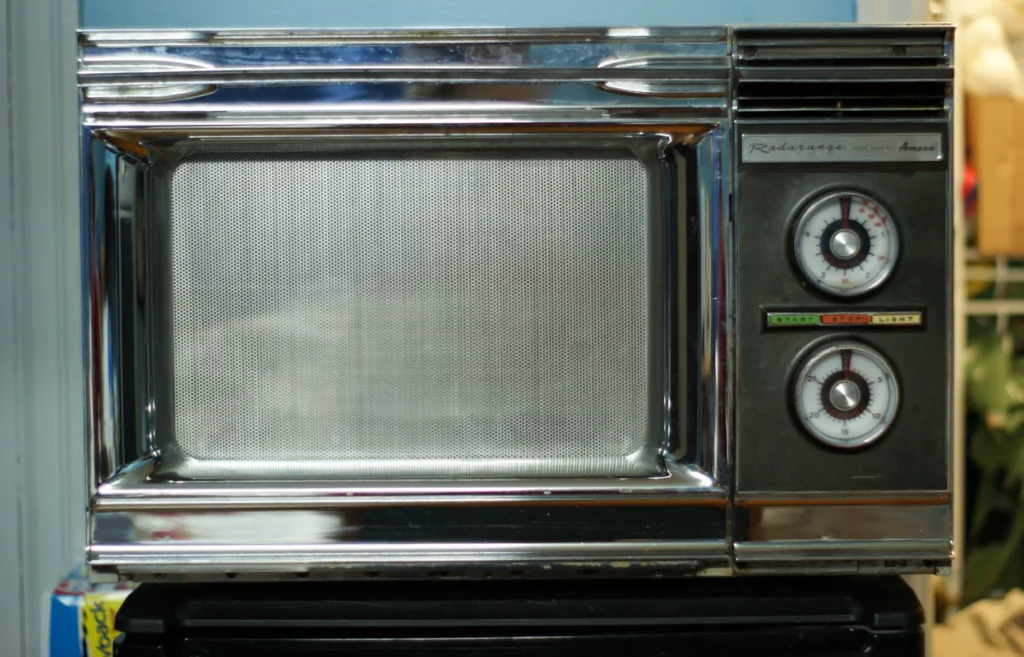
While microwaves first appeared in the 1970s, they became ubiquitous kitchen status symbols during the 1980s, promising to revolutionize cooking with their space-age technology and futuristic convenience. These countertop miracles promised to transform how Americans prepared meals, with an entire industry of microwave-specific cookbooks and specialty containers emerging to help us navigate this brave new world of rapid heating. The distinctive hum and ding became the soundtrack of quick meals, with families gathering around to watch food spin on the glass plate as if witnessing some kind of culinary magic show.
The introduction of microwave popcorn and TV dinners specially designed for these miracle machines made us feel like we were living in “The Jetsons,” with food preparation reduced to the push of a button. Cookbooks optimistically suggested we could prepare entire gourmet meals in these radiation boxes, though most of us quickly discovered the difference between “technically possible” and “probably shouldn’t” when it came to microwaved cuisine. Today’s sous vide machines and smart appliances make the humble microwave seem quaintly limited, but for a moment in the ’80s, they represented nothing less than the complete reinvention of the American kitchen.
6. Casio Calculator Watches
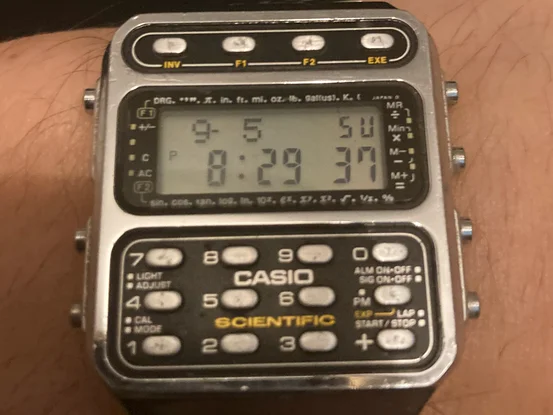
Strapping a calculator to your wrist in the early 1980s wasn’t just a fashion choice—it was a bold statement that you were a person of the future who might need to compute complex equations at any moment. These digital timepieces made math nerds feel like secret agents, with their tiny rubber buttons allowing for discreet calculations during tests (until teachers caught on) and impromptu demonstrations of technological prowess. The Casio Calculator Watch transformed the humble timepiece into a multifunctional device, foreshadowing the smartwatches that would come decades later.
The tiny buttons required toothpick-precision or the use of a ballpoint pen, and the battery life was notoriously short, but these limitations didn’t dampen our enthusiasm for wearable technology. Let’s be honest—most of us never actually needed to calculate a 15% tip while away from home, but that wasn’t really the point; the watch represented possibility, preparedness, and a glimpse into a world where information and tools would always be at our fingertips. Today’s Apple Watches make these primitive wrist calculators look absurdly limited, but they still hold a special place in our hearts as the moment when technology became truly personal.
7. Music Videos on MTV
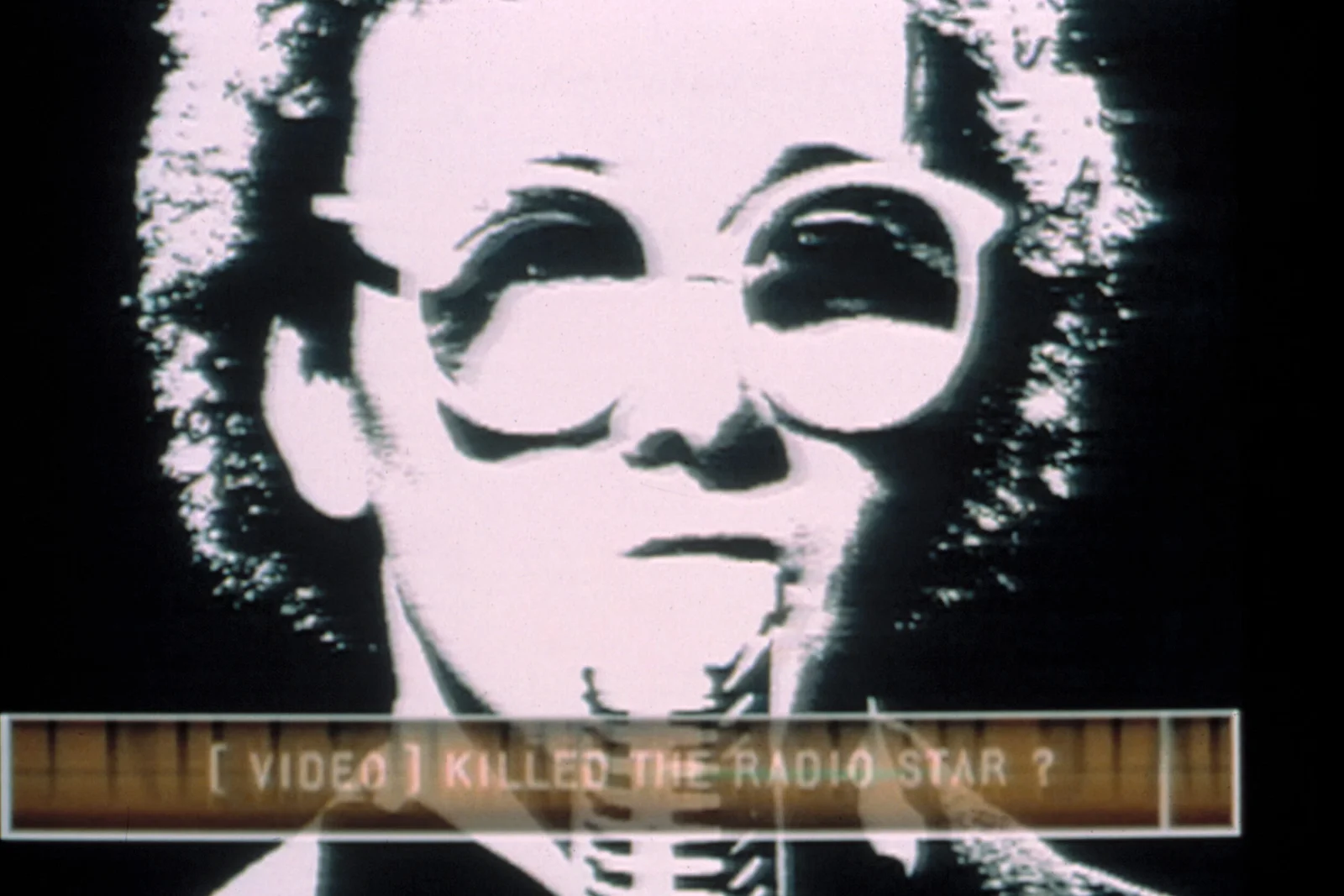
When MTV launched in 1981 with the prophetic “Video Killed the Radio Star,” it fundamentally altered not just how we consumed music, but how we understood visual storytelling, celebrity, and youth culture. Suddenly, music wasn’t just something you heard on the radio—it was a multi-sensory experience with fashion, cinematography, and narrative all packaged into bite-sized artistic statements that played around the clock. Families installed cable specifically to get MTV, with parents often wondering what all the fuss was about while teenagers remained glued to the television, waiting for their favorite videos to appear in rotation.
The VJs became household names, and phrases like “I want my MTV” entered the national vocabulary as music videos transformed marketing, fashion, and even how artists created their songs. Michael Jackson’s “Thriller,” with its cinematic approach and unprecedented budget, showed that music videos could be more than just promotional tools—they could be cultural events unto themselves. Today’s on-demand YouTube culture makes it hard to recapture the communal experience of MTV’s heyday, when discovering a new video meant camping in front of the TV and the channel actually played music videos instead of reality programming.
8. The Commodore 64
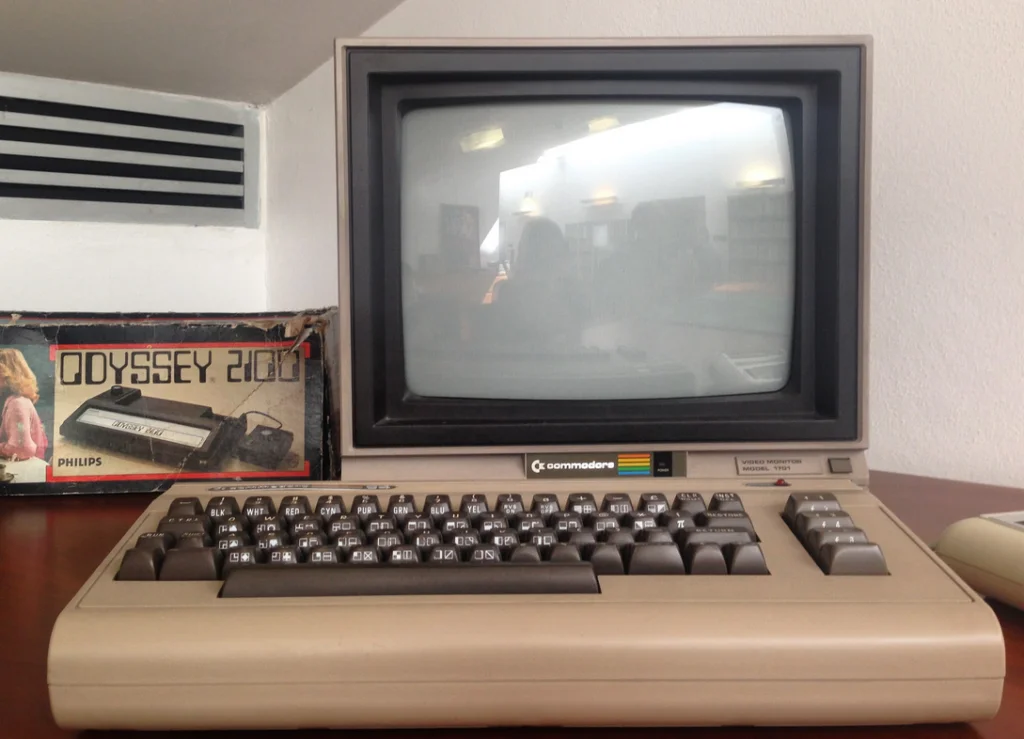
When the Commodore 64 arrived in homes across America, it promised to transform every family into computer programmers and digital pioneers with its (then) impressive 64 kilobytes of memory. This beige box connected to the family television set introduced a generation to BASIC programming, floppy disks the size of sandwich plates, and games that took so long to load from cassette tapes that you could make a sandwich before playing. Despite its limitations, the C64 became the best-selling home computer model of all time, making digital literacy accessible to middle-class families and turning previously intimidating technology into something approachable.
The distinctive blue welcome screen and blinking cursor invited exploration in a way that today’s polished interfaces don’t—you had to learn commands and understand the machine’s logic to make it do anything useful. Many users have fond memories of typing in pages of code from magazines, saving programs on temperamental storage devices, and the anticipation as a program slowly revealed itself line by line during the loading process. Modern computers with their terabytes of storage and intuitive interfaces make the Commodore 64 look like an electronic typewriter, but those who experienced it remember the thrill of feeling like they were communicating directly with the future.
9. LaserDisc Players
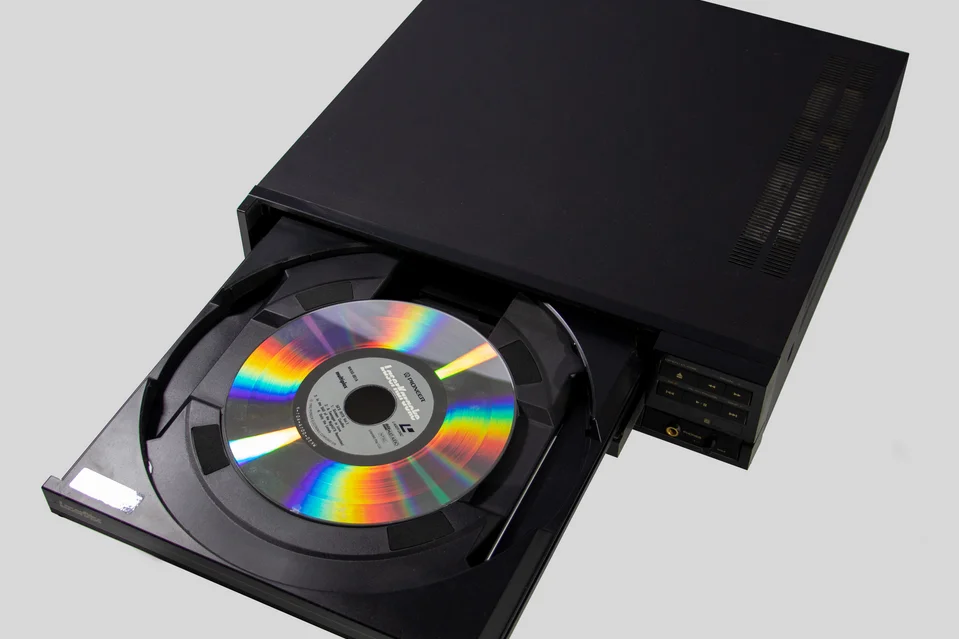
LaserDisc players represented the absolute pinnacle of home video technology in the 1980s, promising cinema-quality visuals and digital sound that made VHS tapes look like cave paintings in comparison. These massive shiny discs, the size of vinyl records but reflective like mirrors, contained movies in a format that wouldn’t degrade with repeated viewings, a revolutionary concept for home cinema enthusiasts who had grown accustomed to increasingly fuzzy rental tapes. The players themselves were enormous, expensive status symbols that announced to visitors that you took your entertainment seriously enough to invest in what was clearly the format of the future.
The improved picture quality and CD-quality sound were genuinely impressive, even if you had to flip or change the disc halfway through most movies—a small price to pay for what felt like bringing the movie theater experience into your living room. Despite their technical superiority, LaserDiscs never achieved mainstream success in America (though they fared better in Japan), ultimately losing the format war to the more convenient VHS before DVD technology arrived to make both obsolete. Those gleaming discs that once represented the cutting edge now sit in collectors’ basements, along with Betamax tapes and HD-DVDs, in the graveyard of promising technologies that couldn’t quite capture the public imagination.
10. Answering Machines

Before voicemail became a standard feature of phone service, answering machines were revolutionary devices that freed us from the tyranny of having to be physically present to receive calls. These electronic secretaries with their mini-cassette tapes captured messages from friends, family, and coworkers, allowing users to screen calls and respond on their own schedule—a concept that feels elementary now but was genuinely liberating at the time. The ritual of coming home and checking the blinking light to see if anyone had called became a daily routine, with the mechanical whirring of the tape rewinding signaling the transition from public to private life.
Many users spent hours crafting the perfect outgoing message, often incorporating music, jokes, or elaborate scenarios that showcased their creativity and personality. The public nature of these messages—which could be heard by anyone who called while you were out—created a new form of self-expression and sometimes embarrassment when parents or bosses encountered messages intended to impress friends. Modern smartphones with their visual voicemail interfaces and declining voice call usage have made answering machines seem as outdated as rotary phones, but for a time, they represented communication freedom and the ability to never miss an important message again.
11. Fax Machines

The facsimile machine brought the future directly into offices across America, allowing documents to be transmitted instantaneously over phone lines in what seemed like technological sorcery. The distinctive handshake tones of connecting fax machines became the sound of business getting done, while the thermal paper that emerged with an exact copy of a document from hundreds of miles away felt like something straight out of science fiction. Suddenly, signed contracts, important memos, and even crude jokes could travel across the country in minutes rather than days, fundamentally changing the pace of business communication and creating new expectations for response times.
The technology actually dated back to the 1800s but found its mass-market moment in the 1980s as prices fell and reliability improved. The ritual of feeding a document into the machine, dialing the receiving number, and waiting for confirmation created a tangible connection between sender and receiver that email would later make obsolete. Today’s digital natives might struggle to understand the excitement over technology that essentially just sent pictures of paper over phone lines, but in its heyday, the fax machine represented the first step toward the interconnected, instant-communication world we now take for granted.
12. The Space Shuttle Program
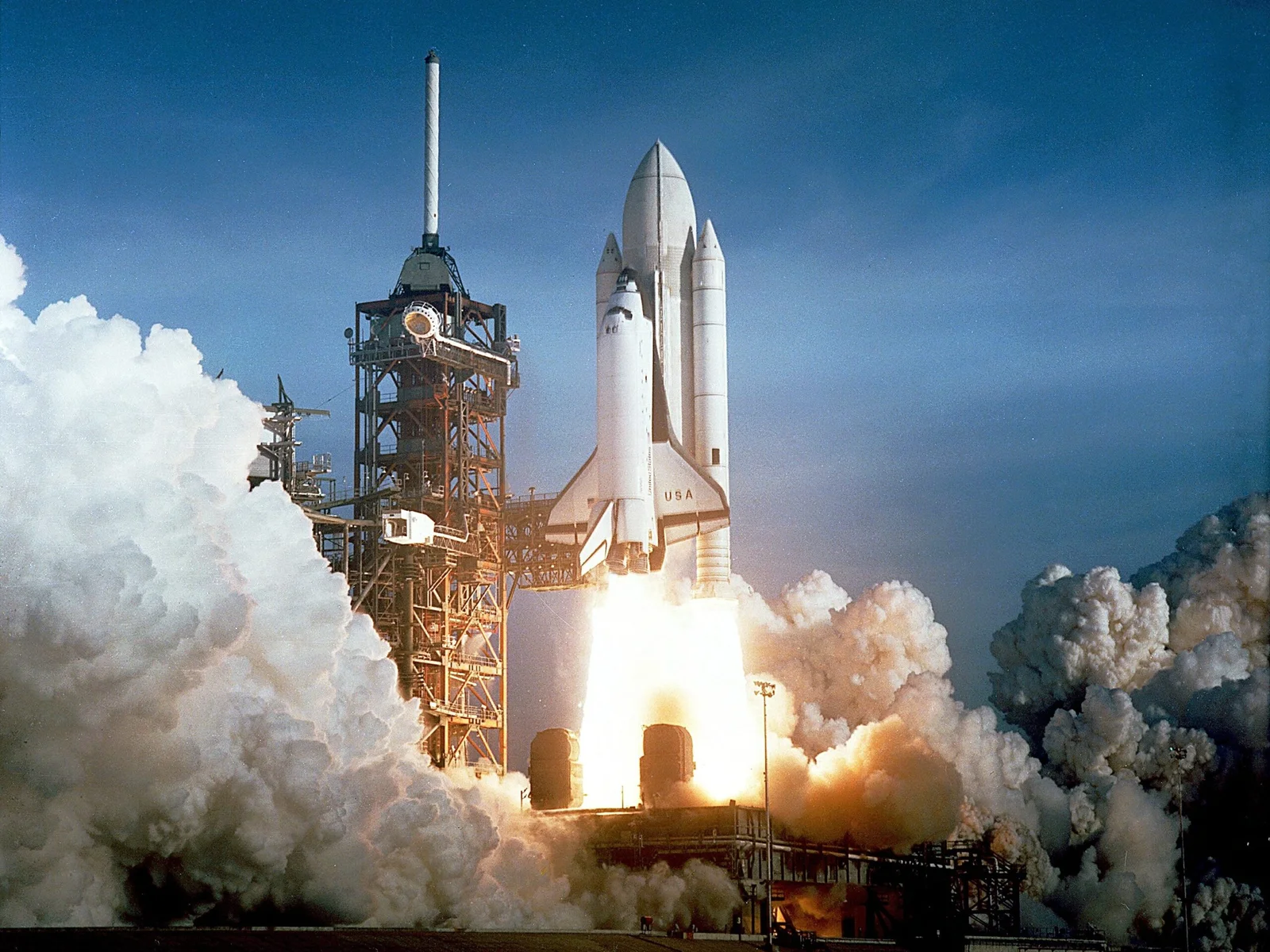
When Columbia lifted off on its maiden voyage in 1981, it represented not just the next chapter in space exploration but what seemed like the democratization of space travel itself. The reusable shuttle design promised to make trips to orbit routine and economical, with its airplane-like return to Earth symbolizing how space was becoming just another destination rather than an exotic frontier. Americans gathered around televisions to watch launches that combined the patriotic pride of the Apollo era with a new sense that we were witnessing the beginning of regular space travel—perhaps even the precursor to civilian trips beyond Earth’s atmosphere.
The space shuttle’s cargo bay, capable of deploying satellites and supporting scientific research, suggested a future where humans would construct space stations, build settlements on other worlds, and develop industries beyond Earth. The selection of Sally Ride and Guion Bluford as astronauts expanded representation in space, while the Teacher in Space Program (which tragically led to the Challenger disaster) reflected the belief that space travel would soon be accessible to ordinary citizens. Today’s private space companies like SpaceX and Blue Origin are finally delivering on some of the shuttle program’s promises, but the sleek orbiter design still represents a distinctly ’80s vision of the future—optimistic, elegant, and ultimately more complex than we anticipated.
13. Max Headroom
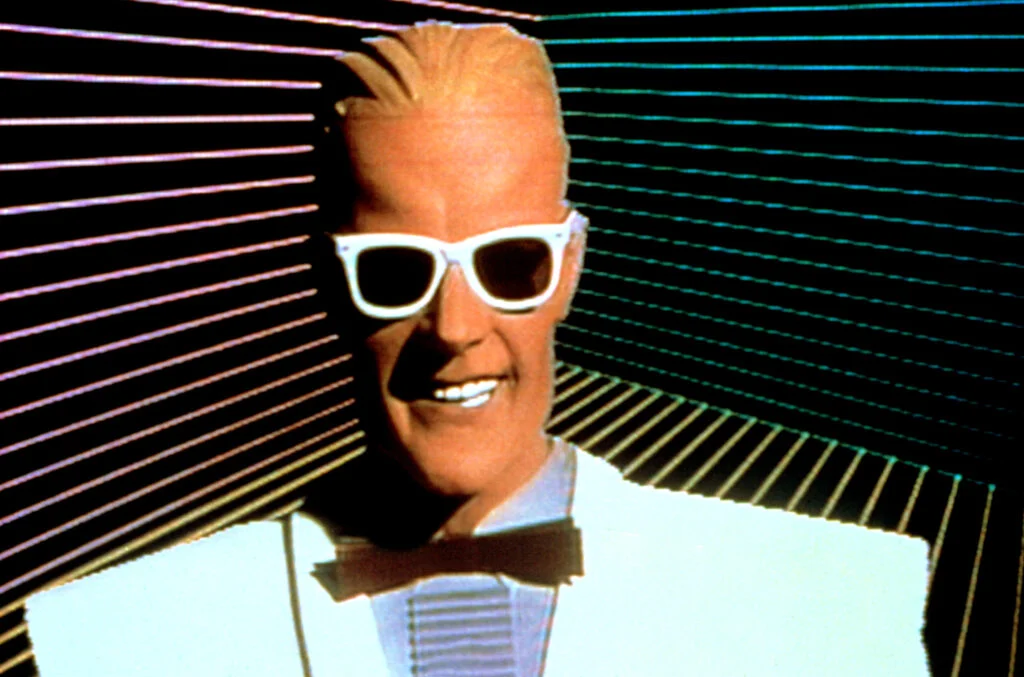
When the computer-generated TV host Max Headroom stuttered onto screens with his digital sunglasses and disembodied head, he represented the bleeding edge of both technology and entertainment in a way that captivated ’80s audiences. Though the character was actually portrayed by actor Matt Frewer in prosthetic makeup with post-production effects—the technology to create a true digital host didn’t yet exist—the illusion was convincing enough to make viewers believe they were seeing the first computer-generated TV personality. His distinctive fragmented speech pattern, cynical wit, and visual glitches created an aesthetic that defined ’80s digital cool and influenced everything from music videos to advertising for years afterward.
Max appeared in his own TV series, hosted a music video show, and became the spokesman for New Coke, making him one of the first virtual celebrities and foreshadowing today’s digital influencers and AI personalities. The character’s popularity revealed our complicated relationship with emerging technology—simultaneously attracted to and unsettled by the possibilities of digital life and artificial intelligence. Looking at Max Headroom now, with his blocky graphics and limited animation, provides a telling snapshot of how we once imagined digital beings would look and behave, simultaneously primitive by today’s standards yet remarkably prescient about the questions of identity and reality that digital technology would eventually raise.
The ’80s vision of the future may seem quaintly limited now, with its chunky gadgets, wired connections, and physical media, but it represented a crucial turning point in our relationship with technology. These innovations paved the way for the truly digital world we inhabit today, where the magical has become mundane and yesterday’s impossible is today’s inconvenient. Perhaps the most nostalgic aspect isn’t the technology itself but the wide-eyed optimism with which we embraced it—the genuine belief that each new device was bringing us one step closer to the utopian future we’d been promised. That sense of wonder might be the most precious artifact of all from that neon-tinted decade.
This story 13 Times the ’80s Felt Like the Future—But Now Look Totally Retro was first published on Takes Me Back.


